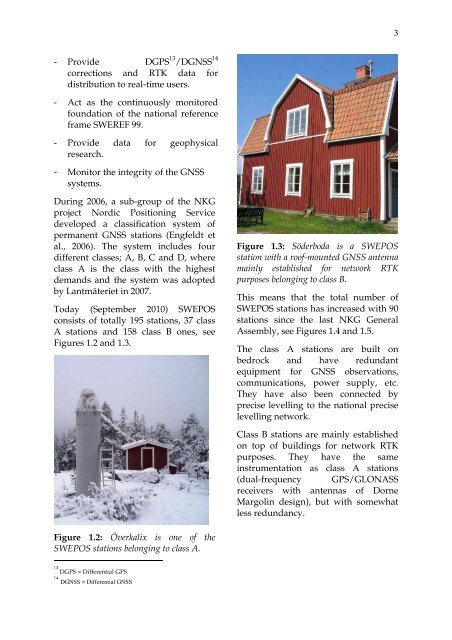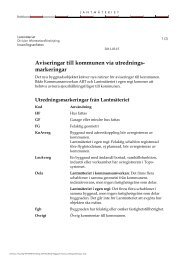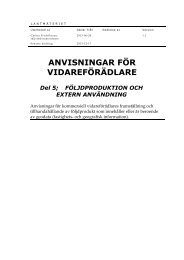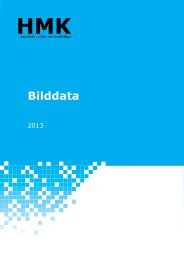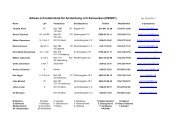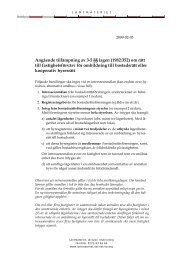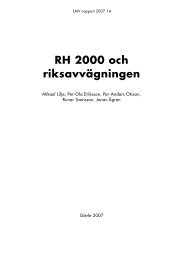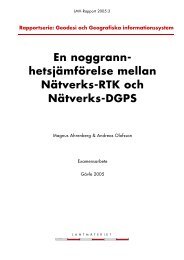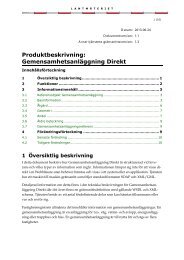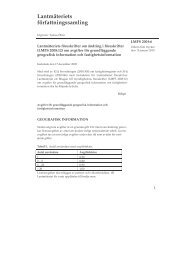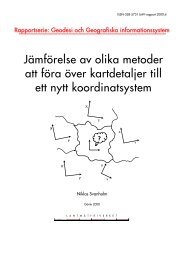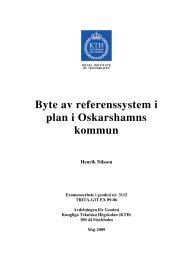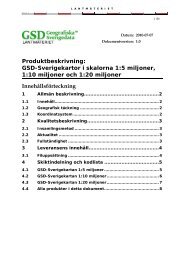National Report of Sweden to the NKG General ... - Lantmäteriet
National Report of Sweden to the NKG General ... - Lantmäteriet
National Report of Sweden to the NKG General ... - Lantmäteriet
Create successful ePaper yourself
Turn your PDF publications into a flip-book with our unique Google optimized e-Paper software.
3- Provide DGPS 13 /DGNSS 14corrections and RTK data fordistribution <strong>to</strong> real-time users.- Act as <strong>the</strong> continuously moni<strong>to</strong>redfoundation <strong>of</strong> <strong>the</strong> national referenceframe SWEREF 99.- Provide data for geophysicalresearch.- Moni<strong>to</strong>r <strong>the</strong> integrity <strong>of</strong> <strong>the</strong> GNSSsystems.During 2006, a sub-group <strong>of</strong> <strong>the</strong> <strong>NKG</strong>project Nordic Positioning Servicedeveloped a classification system <strong>of</strong>permanent GNSS stations (Engfeldt etal., 2006). The system includes fourdifferent classes; A, B, C and D, whereclass A is <strong>the</strong> class with <strong>the</strong> highestdemands and <strong>the</strong> system was adoptedby Lantmäteriet in 2007.Today (September 2010) SWEPOSconsists <strong>of</strong> <strong>to</strong>tally 195 stations, 37 classA stations and 158 class B ones, seeFigures 1.2 and 1.3.Figure 1.3: Söderboda is a SWEPOSstation with a ro<strong>of</strong>-mounted GNSS antennamainly established for network RTKpurposes belonging <strong>to</strong> class B.This means that <strong>the</strong> <strong>to</strong>tal number <strong>of</strong>SWEPOS stations has increased with 90stations since <strong>the</strong> last <strong>NKG</strong> <strong>General</strong>Assembly, see Figures 1.4 and 1.5.The class A stations are built onbedrock and have redundantequipment for GNSS observations,communications, power supply, etc.They have also been connected byprecise levelling <strong>to</strong> <strong>the</strong> national preciselevelling network.Class B stations are mainly establishedon <strong>to</strong>p <strong>of</strong> buildings for network RTKpurposes. They have <strong>the</strong> sameinstrumentation as class A stations(dual-frequency GPS/GLONASSreceivers with antennas <strong>of</strong> DorneMargolin design), but with somewhatless redundancy.Figure 1.2: Överkalix is one <strong>of</strong> <strong>the</strong>SWEPOS stations belonging <strong>to</strong> class A.13DGPS = Differential GPS14DGNSS = Differential GNSS


